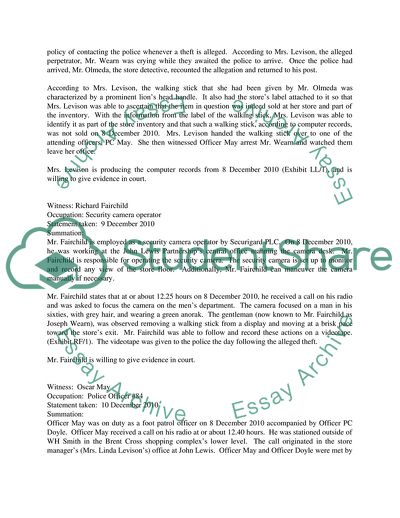Cite this document
(Theft of a Walking Stick Belonging to the John Lewis Partnership Case Study - 1, n.d.)
Theft of a Walking Stick Belonging to the John Lewis Partnership Case Study - 1. Retrieved from https://studentshare.org/law/1748268-criminal-law-barrister-advice-and-defence-statement
Theft of a Walking Stick Belonging to the John Lewis Partnership Case Study - 1. Retrieved from https://studentshare.org/law/1748268-criminal-law-barrister-advice-and-defence-statement
(Theft of a Walking Stick Belonging to the John Lewis Partnership Case Study - 1)
Theft of a Walking Stick Belonging to the John Lewis Partnership Case Study - 1. https://studentshare.org/law/1748268-criminal-law-barrister-advice-and-defence-statement.
Theft of a Walking Stick Belonging to the John Lewis Partnership Case Study - 1. https://studentshare.org/law/1748268-criminal-law-barrister-advice-and-defence-statement.
“Theft of a Walking Stick Belonging to the John Lewis Partnership Case Study - 1”. https://studentshare.org/law/1748268-criminal-law-barrister-advice-and-defence-statement.


